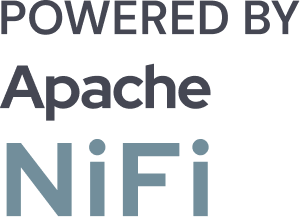Apache NiFi vs Fivetran – Comparing Data Integration Tools
![]()
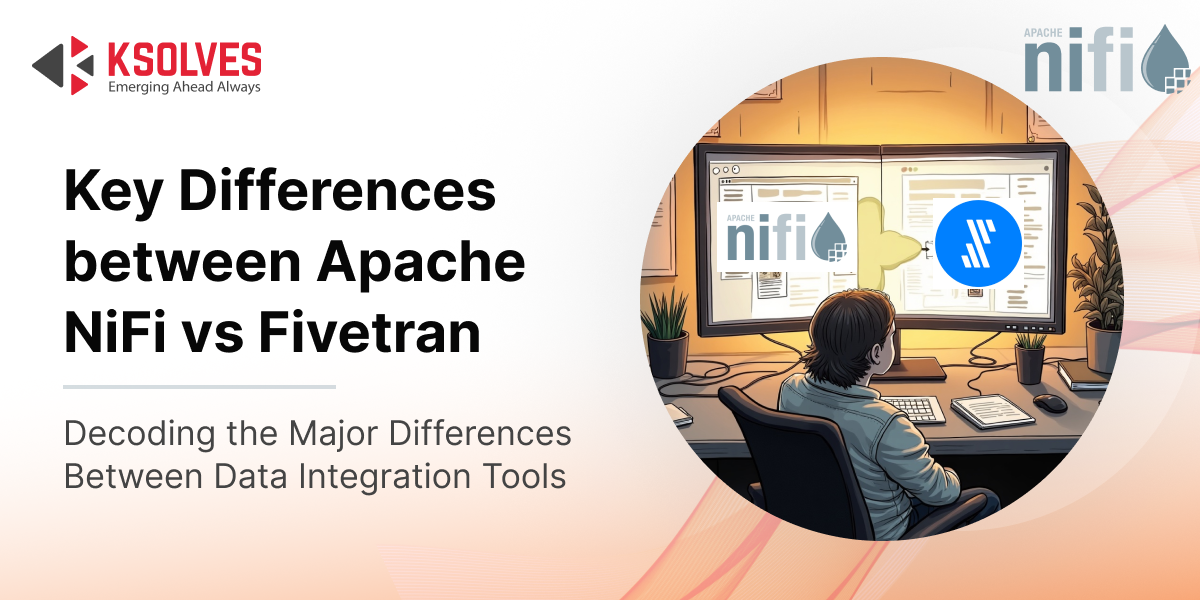
When it comes to moving and managing data, every business needs a reliable solution. Whether you’re syncing customer data from apps or pulling logs from servers, you need the right tool to get your data where it needs to go – fast and accurately. That’s where Apache NiFi and Fivetran come in.
Both tools help with data integration, but they work in very different ways. Apache NiFi is great if you want full control over how data flows, with a visual interface and lots of customization. Fivetran, on the other hand, is perfect if you want a hands-off, fully managed experience that just works out of the box.
In this blog, we’ll break down the difference between Apache NiFi and Fivetran and which one might be the better fit for your business. Whether you’re a data engineer or a business user, this comparison will make your choice easier.
What is Apache NiFi?
Apache NiFi is an open-source data integration tool designed to move and process data between different systems, like databases, applications, cloud storage, and more. It was originally built by the NSA (yes, really!) and later released as an open-source project under the Apache Foundation.
NiFi gives you a drag-and-drop interface where you can visually build data pipelines without writing much code. Think of it as drawing a map that shows how your data travels, from point A to point B, with stops in between to clean, filter, or transform it.
You can use NiFi to:
- Collect data from multiple sources (files, APIs, databases)
- Transform data on the fly (e.g., reformatting, merging, splitting)
- Route it to various destinations like cloud platforms, warehouses, or message queues
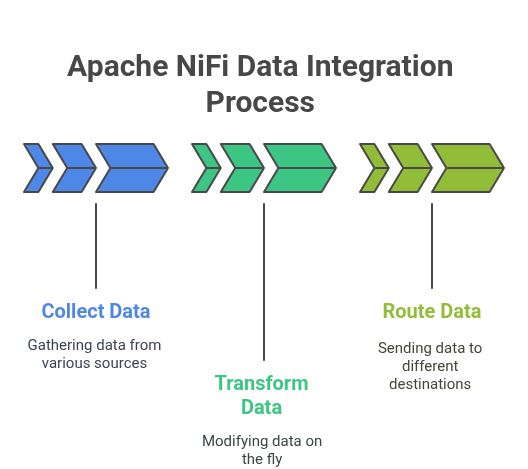
What is Fivetran?
Fivetran is a cloud-based data integration platform that makes it super easy to connect all your apps, databases, and services to a data warehouse. It’s fully managed, meaning you don’t have to worry about building or maintaining pipelines. It does everything for you.
With Fivetran, you just choose your data sources (like Salesforce, Shopify, Google Ads, or MySQL), pick where you want the data to go (like Snowflake or BigQuery), and Fivetran handles the syncing automatically. It updates the data continuously in near real-time and even adjusts to changes in your source schema.
You can think of Fivetran like a plug-and-play solution for modern data teams who want quick setup, low maintenance, and reliable performance.
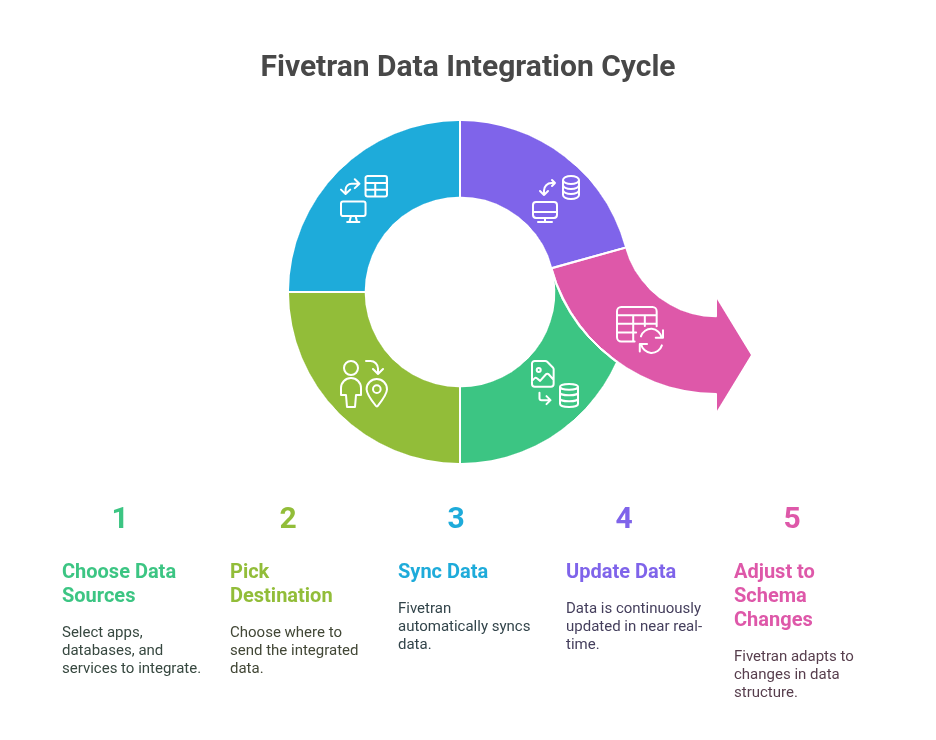
Apache NiFi vs Fivetran – Major Differences
| Parameters | Apache NiFi | Fivetran |
| Overview | Open-source data integration tool designed for automating data flow between systems with a visual interface. | Cloud-based, fully managed ELT platform that automates data extraction and loading from various sources to destinations. |
| Deployment | Self-hosted; can be deployed on-premises or in the cloud. | Cloud-native SaaS; no infrastructure management required. |
| User Interface | Web-based, drag-and-drop UI for designing data flows. | Web-based dashboard with minimal configuration; focuses on simplicity. |
| Customization | Highly customizable with support for scripting and custom processors. | Suitable for complex data workflows. Limited customization; relies on predefined connectors and transformations. |
| Data Processing | Supports both batch and real-time (streaming) data processing. Ideal for scenarios requiring immediate data handling. | Primarily batch processing with scheduled syncs; some support for near real-time. |
| Connectors | Offers a wide range of connectors; may require manual setup for some sources. Extensive support for various protocols and data formats. | Provides 300+ prebuilt connectors for popular data sources and destinations. Simplifies integration with common platforms. |
| Transformation | Supports complex, pre-load transformations (ETL). Includes capabilities like aggregating, splitting, data encryption, and decryption. | Focuses on post-load transformations (ELT); transformations occur in the destination system. Utilizes dbt Core for transformation logic. |
| Data Lineage | Provides detailed data provenance tracking for auditing and debugging. Essential for compliance and troubleshooting. | Basic metadata tracking; less emphasis on detailed lineage. |
| Security | Fine-grained access control, data encryption, and secure communication protocols. Suitable for organizations with strict security requirements. | Compliant with industry standards; offers data encryption and role-based access control. |
| Maintenance | Requires manual setup, monitoring, and maintenance; offers more control over the environment. Can ve fully managed with Data Flow Manager. | Fully managed by Fivetran; minimal maintenance required from the user. Ideal for teams seeking a hands-off approach. |
| Pricing | Free and open-source; costs associated with infrastructure and maintenance. Offers flexibility in deployment but may incur additional costs for support and scaling. | Subscription-based pricing; offers a free plan with limitations. Pricing tiers vary based on data volume and features. |
Apache NiFi vs Fivetran – Key Features
Apache NiFi Features
- Drag-and-drop interface to build data flows visually.
- Real-time and batch data processing support.
- Advanced routing, filtering, and transformation of data.
- Detailed data lineage and provenance tracking.
- Fine-grained access control and encryption for data security.
- Extensible with custom processors and scripting.
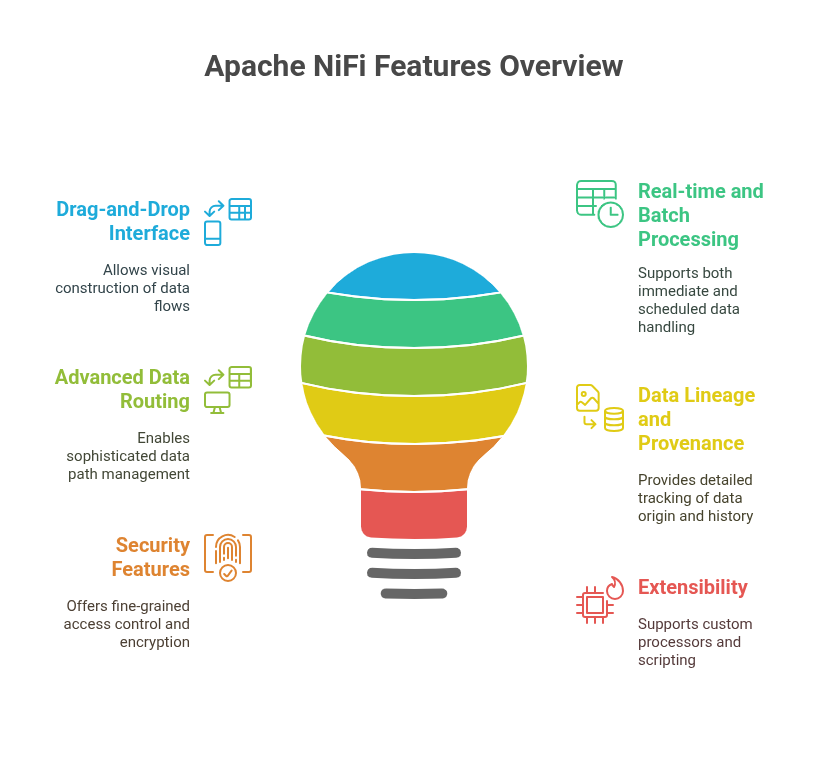
Fivetran Features
- Fully managed, cloud-based ELT platform.
- 300+ prebuilt connectors for popular data sources.
- Automated schema drift handling.
- Scheduled data syncs with near real-time capabilities.
- Transformation in destination with dbt Core support.
- Minimal configuration needed – plug, sync, and use.
- Built-in monitoring and alerts for sync status.
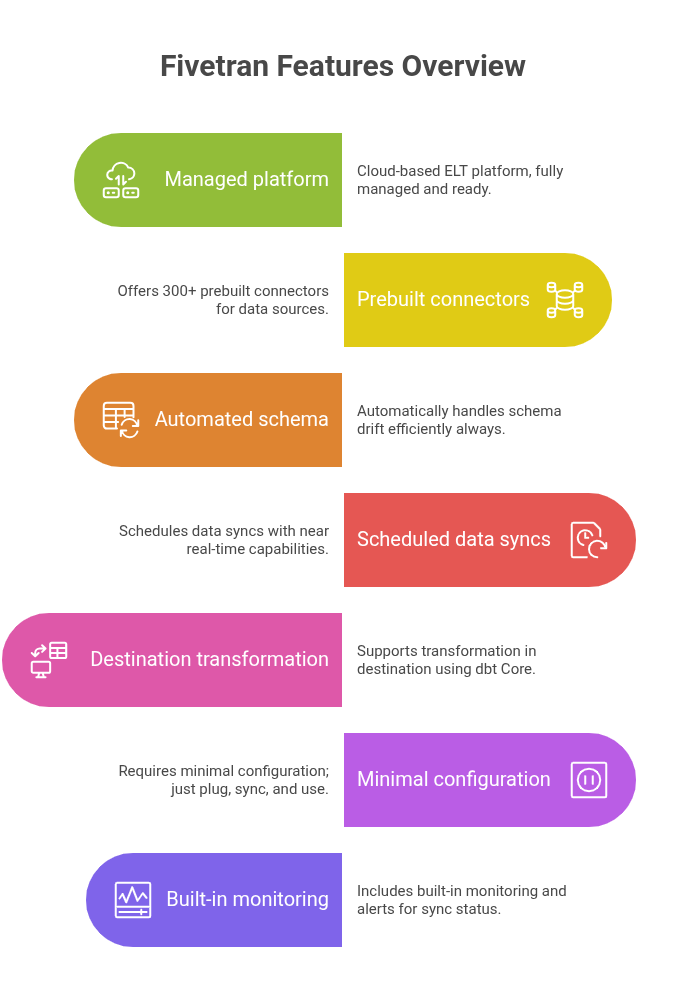
Apache NiFi vs Fivetran – Pros and Cons
Pros of Apache NiFi
- Highly customizable and flexible.
- Supports complex data pipelines and real-time use cases.
- Granular control over every step of the data flow.
- Open-source and free to use.
Cons of Apache NiFi
- Requires technical expertise to set up and manage.
- No out-of-the-box SaaS connectors.
- Manual scaling and infrastructure maintenance.
- Not ideal for teams looking for “set it and forget it” simplicity.
Pros of Fivetran
- Extremely easy to set up – no coding required.
- Fully managed – no maintenance headaches.
- Great for quick data replication and analytics use cases.
- Automated schema changes save time and effort.
- Broad connector library supports popular SaaS apps.
Cons of Fivetran
- Limited transformation capabilities before loading.
- Custom use cases and advanced workflows aren’t easily supported.
- Can get expensive at scale, especially with large data volumes.
- Not ideal for real-time or on-premise integrations.
Apache NiFi vs Fivetran – Use Cases
Apache NiFi Use Cases
- Building real-time streaming pipelines (IoT, logs, alerts).
- Handling hybrid integrations between cloud and on-prem systems.
- Managing large-scale, complex enterprise data flows.
- Deploying secure data pipelines with advanced governance.
While Apache NiFi is powerful for designing and running data flows to for the above use cases, managing and deploying them across environments can become complex and error-prone. That’s where Data Flow Manager (DFM) comes in.
Data Flow Manager is a purpose-built tool for on-premise NiFi to simplify the deployment and promotion of NiFi data flows across multiple clusters in minutes. It takes out the hassle of writing complex scripts and manually exporting and importing NiFi data flows from one cluster to another. Also, it provides version control and audit logs for NiFi data flows and enables effortless rollback to previous stable versions.
Watch this:
https://www.youtube.com/watch?v=ojaBnEkV2YA
Fivetran Use Cases
- Syncing data from SaaS tools (e.g., Salesforce, HubSpot) to cloud warehouses.
- Centralizing marketing and sales data for BI and reporting.
- Enabling quick analytics in tools like Snowflake, BigQuery, or Redshift.
- Automating ELT for fast-growing startups or mid-market companies.
Apache NiFi vs Fivetran – Which One to Choose?
Choose Apache NiFi if you:
- Need real-time data flow and complex logic.
- Require hybrid or on-premise data handling.
- Want full control over your pipeline and transformations.
- Are open to managing your infrastructure or are using Data Flow Manager for multi-cluster deployments.
Choose Fivetran if you:
- Want a fast, hands-off way to move data into your warehouse.
- Have a use case that is mostly about replicating SaaS data for reporting.
- Prefer managed services with minimal setup and maintenance.
- Are focused on analytics-ready data with basic transformation needs.
Conclusion
Apache NiFi and Fivetran serve different purposes in the world of data integration. NiFi shines when you need flexibility, complex data routing, and real-time workflows. It’s ideal for enterprises with technical teams who want to build customized pipelines, especially when combined with Data Flow Manager for easier deployment.
Fivetran, on the other hand, is perfect for teams looking for quick, reliable, and low-effort ELT. It’s best for syncing cloud app data into modern warehouses without worrying about infrastructure.
Ultimately, the right tool depends on your data complexity, team capabilities, and use case goals.
![]()
